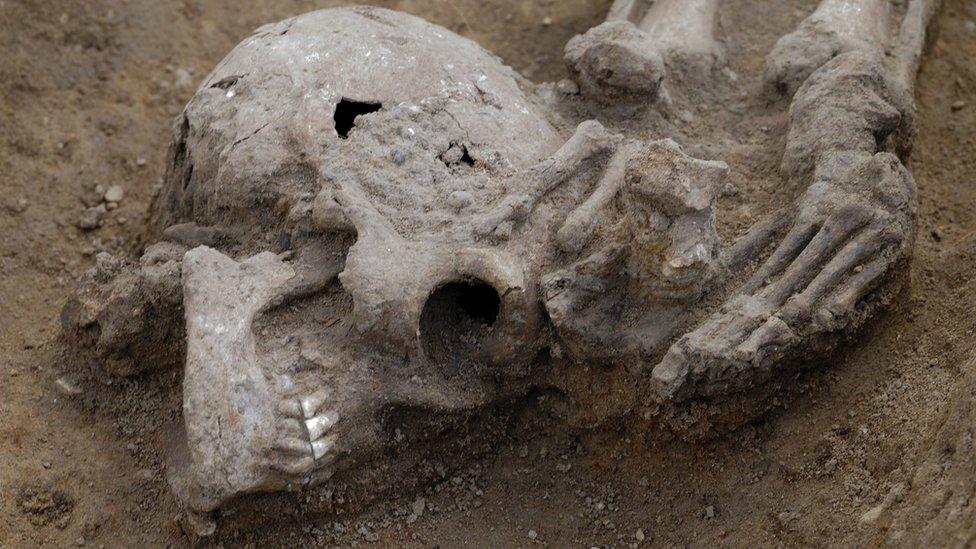Face of Fenstanton Roman crucifixion victim revealed
- Published
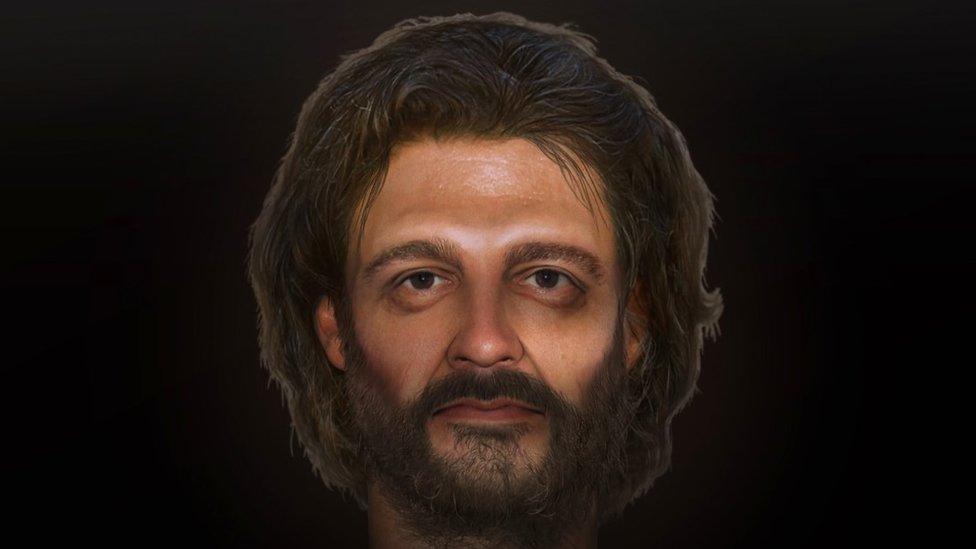
The victim's face was reconstructed by US forensic artist Joe Mullins, who usually works with law enforcement agencies
The face of the victim of a Roman crucifixion has been reconstructed for the first time, experts have said.
The skeleton of a man was discovered with a nail through his heel in Fenstanton, Cambridgeshire, in 2017.
Cambridge University bone specialist Corinne Duhig said it was an "almost unique" find at what was a previously unknown Roman settlement.
The reconstruction of the man's face was revealed in a BBC Four programme, which explored details of his life.

The skeleton was uncovered alongside other burials dating to the 3rd and 4th centuries
Ms Duhig said: "This man had such a particularly awful end that it feels as though by seeing his face you can give more respect to him."
Prior to the Fenstanton discovery, the only other Roman crucified remains discovered had been in Israel, according to Ms Duhig, an osteologist from the university's Wolfson College.
She said: "The lucky combination of good preservation and the nail being left in the bone has allowed me to examine this almost unique example when so many thousands have been lost."
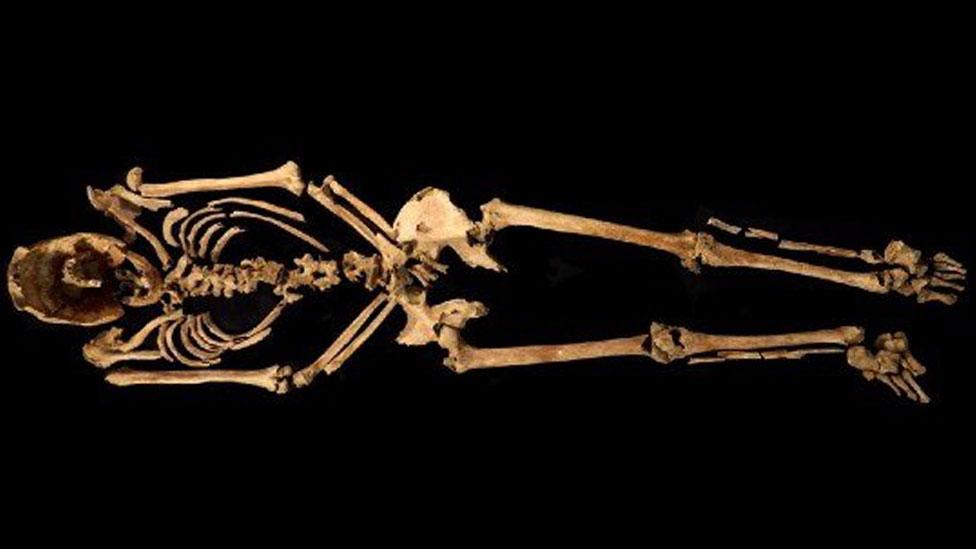
It showed other signs of suffering yet was handed over for burial to his community, archaeologists said
Other injuries were found, suggesting the man had suffered before he died, and his legs had signs of infection or inflammation caused by either a systemic disorder or by being bound or shackled.
Analysis of the remains revealed he spent his whole life in the Cambridgeshire area, and most likely had brown hair and eyes.
It also suggested he was a manual worker, possibly working on processing bone marrow for candles or soaps from the many animal bones found on the site.
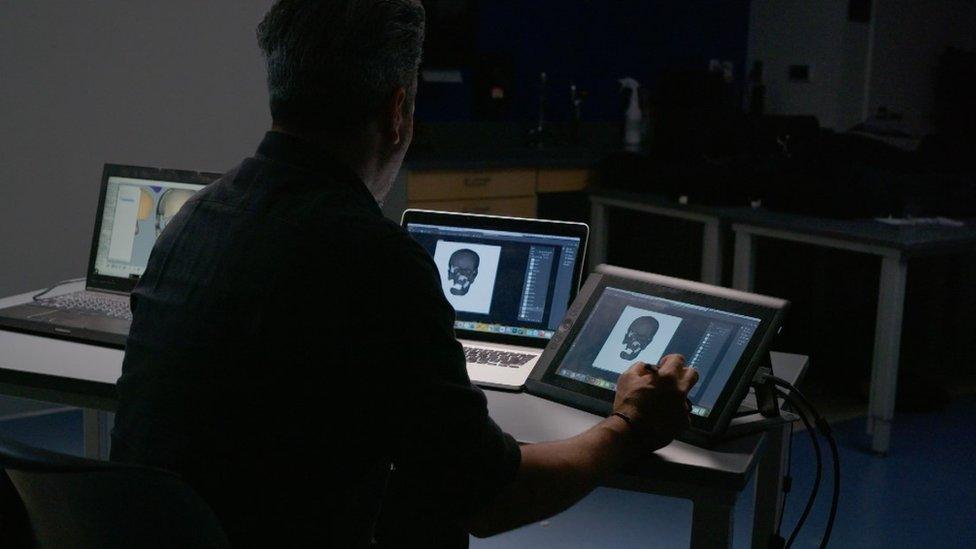
Prof Mullins used the skull "as the foundation" to beginning the reconstruction
Crucifixion was a particularly brutal death, most famously used for Jesus Christ, but also in use for centuries before and after.
Initially it was used for traitors and slaves, but in the 3rd Century, with the extension of Roman citizenship, its use was expanded.
Ms Duhig said: "He was tortured yet given over to his population to have an absolutely normal burial."
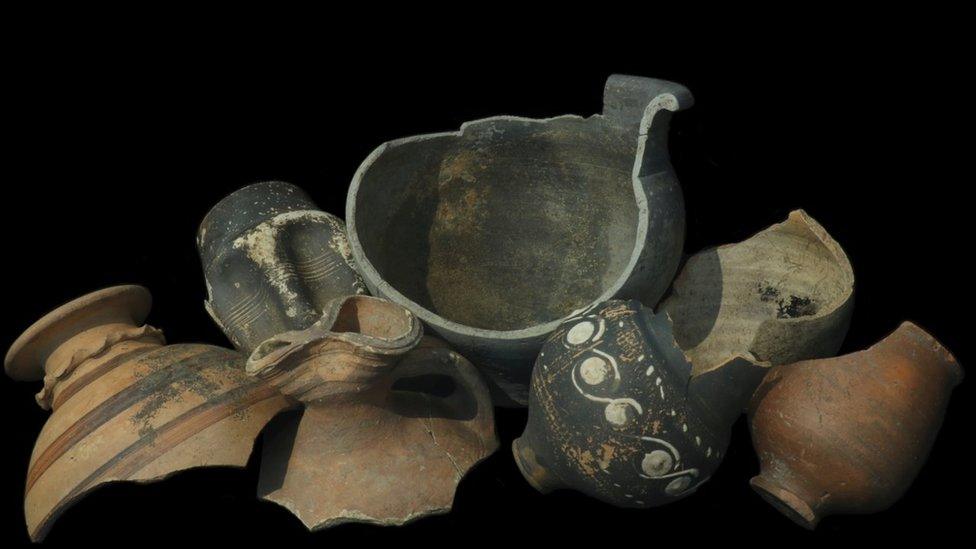
Pottery and other items were unearthed during the dig
The facial reconstruction was undertaken by Prof Joe Mullins of George Mason University, Virginia, USA, who said it was "by the far the most interesting skull I've worked on in my career".
The settlement was discovered by Bedford-based Albion Archaeology, which began its excavation in 2017 ahead of a planned housing development.
Archaeologists found five 3rd and 4th Century cemeteries where 40 adults and five children were buried, some from the same families.
The Cambridgeshire Crucifixion can be watched on BBC iPlayer.

Follow East of England news on Facebook, external, Instagram, external and X, external. Got a story? Email eastofenglandnews@bbc.co.uk, external or WhatsApp 0800 169 183
Related topics
- Published19 December 2023
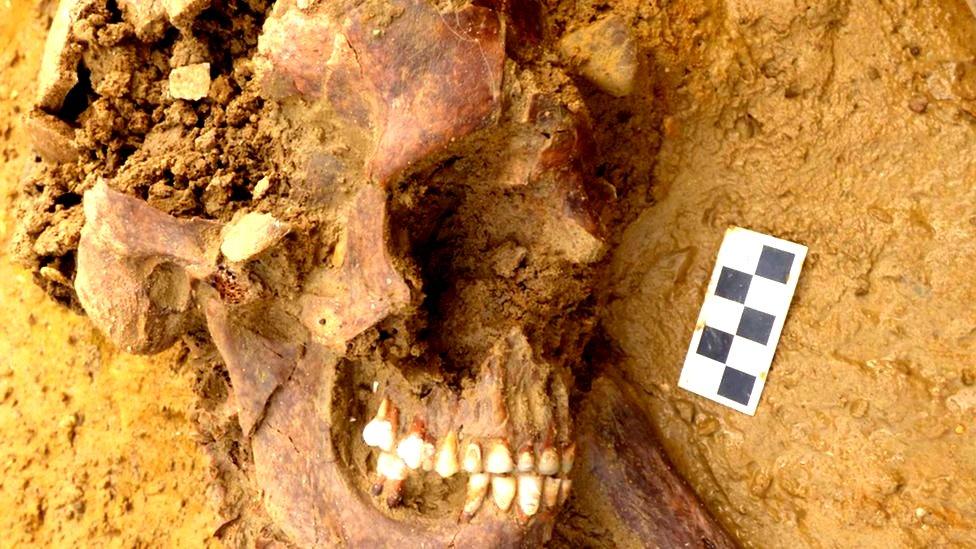
- Published16 September 2023
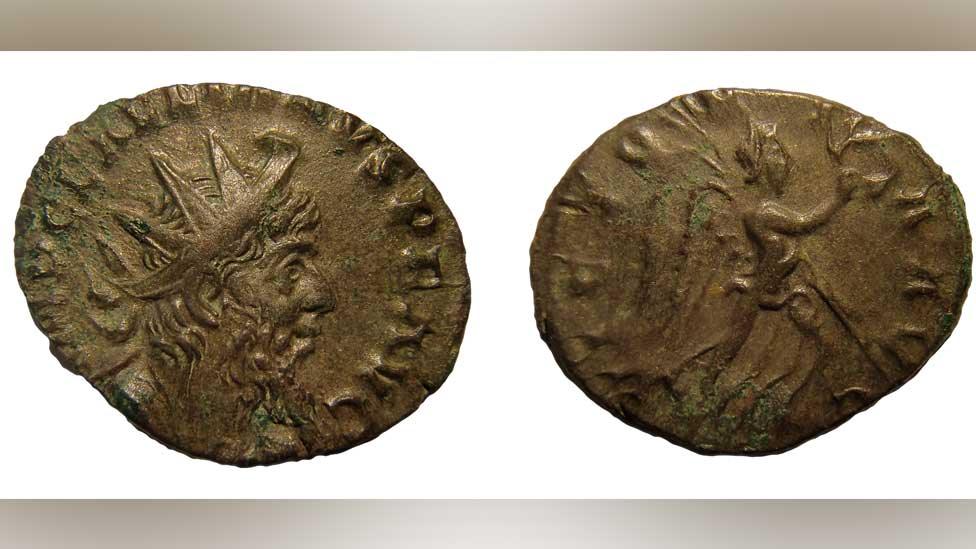
- Published22 August 2023
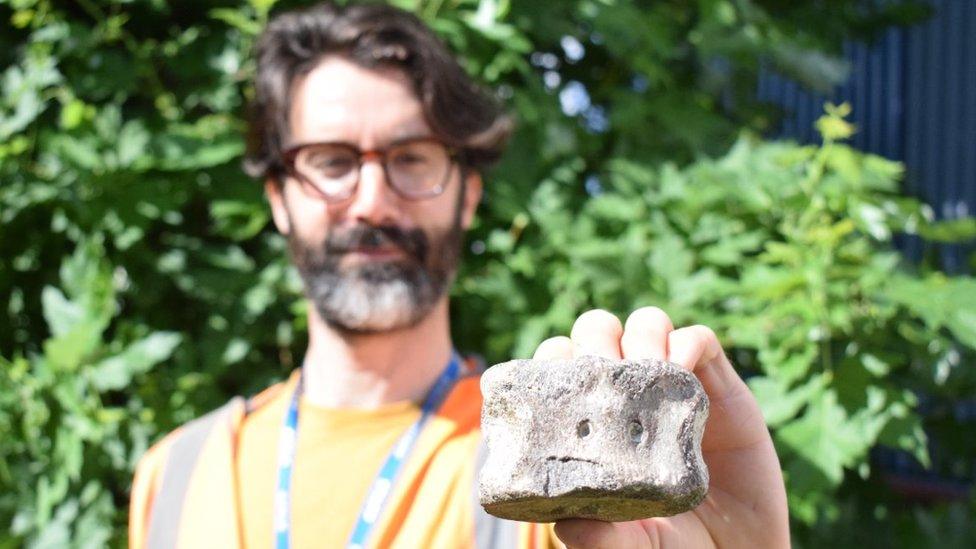
- Published8 December 2021

- Published30 May 2021
